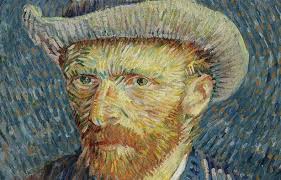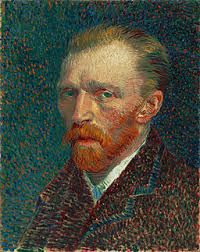
1853 - 1890
Vincent van Gogh

description
Vincent van Gogh was a Dutch Post-Impressionist painter who is now among the most famous and influential figures in the history of Western art. He created about 2,100 artworks, including landscapes, still lifes, portraits and self-portraits. Eight hundred fifty of them were painted with oil. These canvases are characterised by bold colours, dramatic, impulsive and expressive brushwork.
When the artist was young, he worked as an art dealer. However, soon Van Gogh decided to leave that job and devoted all his time to the painting. “The worst enemies of arts are art dealers”, – the artist said.
His early works were mostly still lifes and the depictions of peasant labourers. Later on, he created a new style, painting still lifes and local landscapes. The paintings by van Gogh grew brighter in colour as he developed his style during his stay in Arles in the south of France in 1888.
At a certain time, the artist turned to the Bible and decided to become a priest. He worked at a small school near London as a teacher and the assistant of a pastor. Van Gogh abandoned all the conveniences and lived like poor people, slept on the floor in a semi-arranged, almost unheated hut and gave his money to poor.
Van Gogh was unsuccessful during his lifetime. Many people considered him a madman and a failure. The master became famous only after his suicide in 1890. He did not have any heirs. That’s why he considered his paintings his children.
The artist was considered a precursor of Expressionism and quite deservedly called the pioneer of modern art. His works have always influenced world arts from the early 20th century to the present day.
Key ideas:
– Van Gogh gave a completely different pictorial language to the beginning of the twentieth century. The artist studied the works of his predecessors and then creatively rethought what he had seen. His conclusions and emotions helped him go beyond the old system and create his style. He left the framework of the surface vision, penetrated the essence of things and phenomena and displayed the subconscious. Art historians say that at this very time Sigmund Freud, an Austrian psychoanalyst, revealed the depths of the modern theory of personality.
– The desire of Van Gogh to express the sum of the moments of the past, present and future is expressed in all his works.
– The artist developed his understanding of the landscape. According to him, the painter must express his inner perception of nature through analogy with a human. He said: “When you draw a tree, treat it as a figure.”
– The speciality of the artist’s style is characterized by the inability to depict a man in a traditional way. Figures of people deprived of the natural harmony and smooth lines were described as a part of nature. The artist unusually conveyed atmospheric nuances and light-and-air environment, as if dismembering the whole. The shapes do not merge. Faces, figures, trees and objects are separate elements forming one picture.
– The specifics of Van Gogh’s oil paintings are a wide, powerful and often curled brushstroke.
1853
1869
1875
1880
1882
1890
The birth of the artist
Teenage years

The first step towards painting

Soon Van Gogh began to try his hand at painting.
Apprenticeship

Art School

“Wheat Field with Ravens”. The death

Vincent van Gogh
On Artist
flow
Impressionism
Realism
friends
Émile Bernard
artists
Louis Anketen
Henri de Toulouse-Lautrec
Camille Pissarro
Edouard Manet
Emile Bernard
Edgar Degas
Claude Monet
By Artist
flow
Fauvism
Expressionism
Abstract expressionism
friends
Émile Bernard
artists
Edgar Degas
Edvard Munch
Andre Derain
Henri Matisse
Tihanyi Lajos
Stuart Davis
Alfons Maria Mucha
